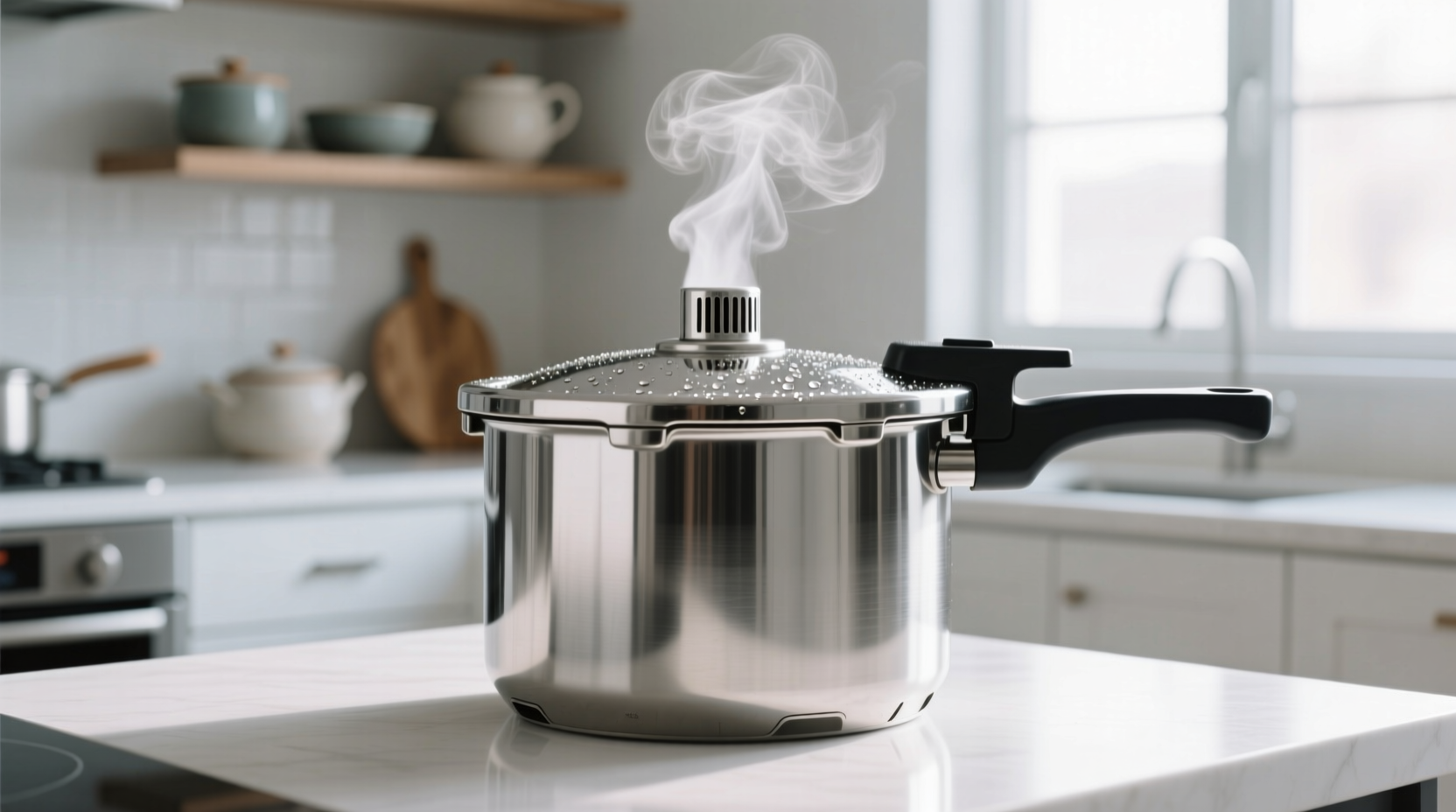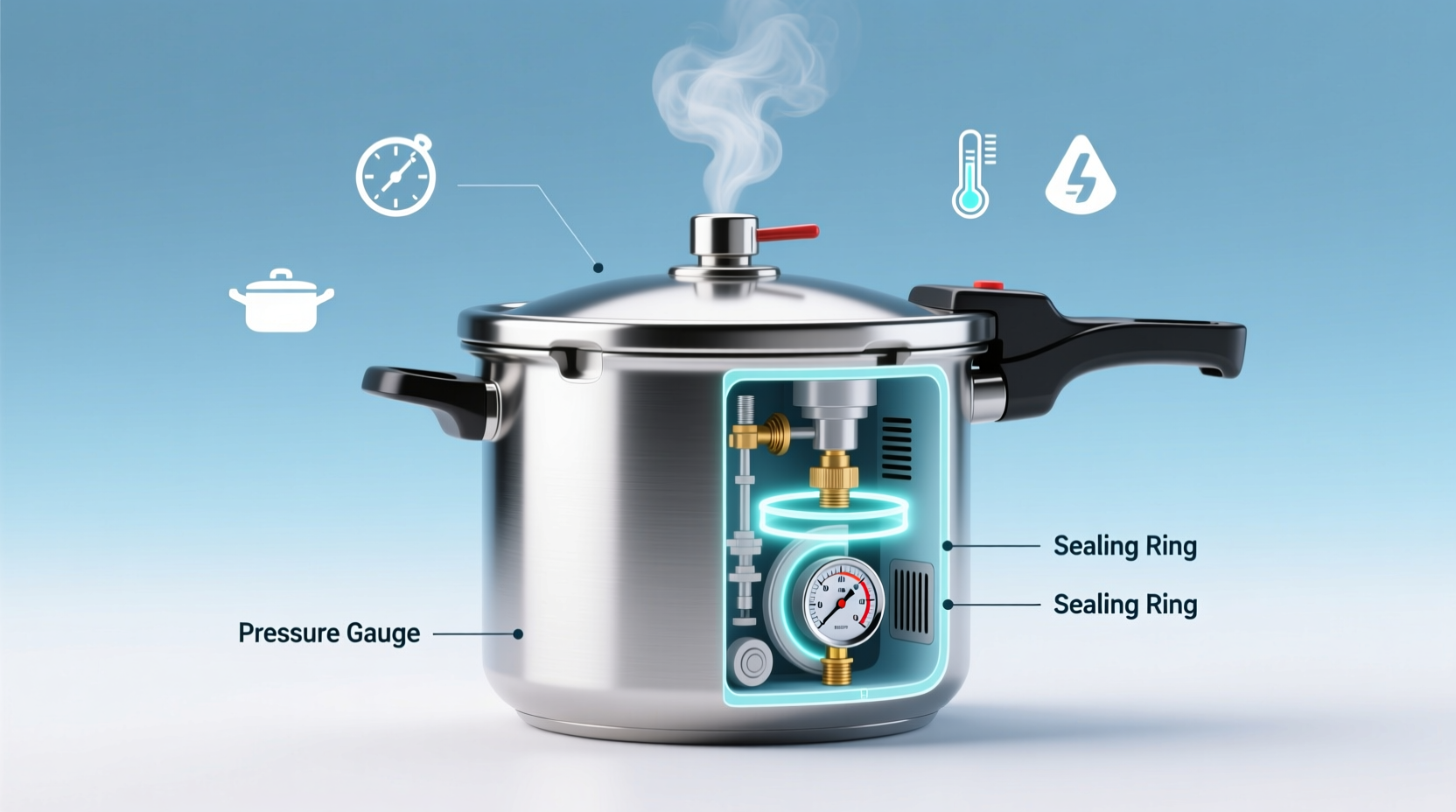The Science Behind Pressure Cooking Made Simple
When you seal a pressure cooker, trapped steam increases internal pressure, raising water's boiling point from 212°F (100°C) to approximately 250°F (121°C) at 15 psi. This higher temperature accelerates chemical reactions in food, breaking down collagen in meats and starches in legumes dramatically faster than conventional cooking. The sealed environment also prevents moisture loss, keeping foods succulent while cutting energy use by up to 50% compared to traditional methods.

From Dangerous Device to Kitchen Essential: A Historical Timeline
Pressure cooking technology has evolved significantly since its invention. Early models in the 17th century lacked proper safety mechanisms, but modern engineering has transformed them into reliable kitchen tools. This timeline shows key developments that made pressure cookers both safe and practical for everyday use:
| Year | Development | Impact |
|---|---|---|
| 1679 | Denis Papin's "Digester" prototype | First pressure cooking vessel; lacked safety features |
| 1864 | First pressure cooker with safety valve | Reduced explosion risks significantly |
| 1938 | Aluminum construction introduced | Lighter, more affordable models for home use |
| 1990s | Double-locking mechanisms standardized | Nearly eliminated accidental releases |
| 2010s | Smart electric models with digital controls | Automated pressure regulation and multiple cooking programs |
Real-World Benefits You'll Notice Immediately
Home cooks consistently report transformative results when incorporating pressure cooking into their routines. Unlike slow cookers that require hours of planning, pressure cookers deliver restaurant-quality results in a fraction of the time. Consider these practical advantages:
- Time savings: Cook dried beans from scratch in 25 minutes instead of 2+ hours
- Energy efficiency: Use 30-50% less energy than conventional stovetop cooking
- Nutrient preservation: Retain up to 90% of water-soluble vitamins compared to boiling
- Flavor development: Create rich broths and tender meats without lengthy simmering
- Year-round comfort: Generate less ambient heat than ovens during summer months
Safety First: Modern Pressure Cooker Features That Protect You
According to the U.S. Consumer Product Safety Commission, modern pressure cookers have virtually eliminated historical safety concerns through multiple redundant mechanisms. Every certified model includes at least three independent safety features:
- Interlocking lid system that prevents opening under pressure
- Primary pressure release valve with automatic backup
- Overpressure plug that vents excess steam safely
Unlike early models that occasionally failed catastrophically, today's pressure cookers undergo rigorous testing to withstand pressures far exceeding normal operating ranges. The National Fire Protection Association reports zero fire incidents directly attributed to properly functioning modern pressure cookers over the past decade.
When Pressure Cooking Shines: Practical Applications
While pressure cookers excel at specific tasks, they're not universally appropriate for all cooking. Understanding their ideal applications prevents frustration and maximizes results:
Ideal for: Tough meat cuts (chuck roast, short ribs), dried legumes, bone broths, root vegetables, and dishes requiring long simmering times. These benefit from the high-temperature steam that breaks down connective tissues rapidly.
Less suitable for: Delicate fish, quick-cooking vegetables, or dishes requiring precise texture control at the end of cooking. The sealed environment prevents last-minute adjustments that open-pot cooking allows.
Professional chefs particularly value pressure cookers for creating complex flavor bases efficiently. The high-pressure environment forces flavors to meld more completely than traditional reduction methods, creating restaurant-quality sauces in minutes rather than hours.
Debunking Common Pressure Cooking Myths
Despite their safety record, misconceptions persist about pressure cookers. Let's address the most prevalent myths with facts:
- Myth: Pressure cookers are dangerous time bombs Reality: Modern models have multiple redundant safety features making them safer than frying pans
- Myth: All pressure-cooked food tastes the same Reality: Proper technique preserves distinct flavors while enhancing texture
- Myth: Only useful for canning or tough meats Reality: Modern electric models handle everything from cheesecake to risotto
- Myth: Difficult to clean and maintain Reality: Most components are dishwasher safe with minimal gasket maintenance required
Getting Started with Your First Pressure Cooking Experience
For beginners, start with forgiving recipes that demonstrate the technology's advantages without requiring precision. Try these foundational techniques:
- Always follow manufacturer's liquid requirements (typically 1-2 cups minimum)
- Release pressure naturally for foods with high starch content to prevent spewing
- Use the "quick release" method for vegetables to maintain texture
- Never fill beyond two-thirds capacity, or half full for foaming foods
- Allow 10-15 minutes for the pot to reach full pressure before timing begins
Within just a few uses, you'll develop an intuitive understanding of pressure release timing and liquid ratios. Many home cooks report that pressure cooking becomes their preferred method for meal preparation once they overcome initial hesitation about the technology.











 浙公网安备
33010002000092号
浙公网安备
33010002000092号 浙B2-20120091-4
浙B2-20120091-4